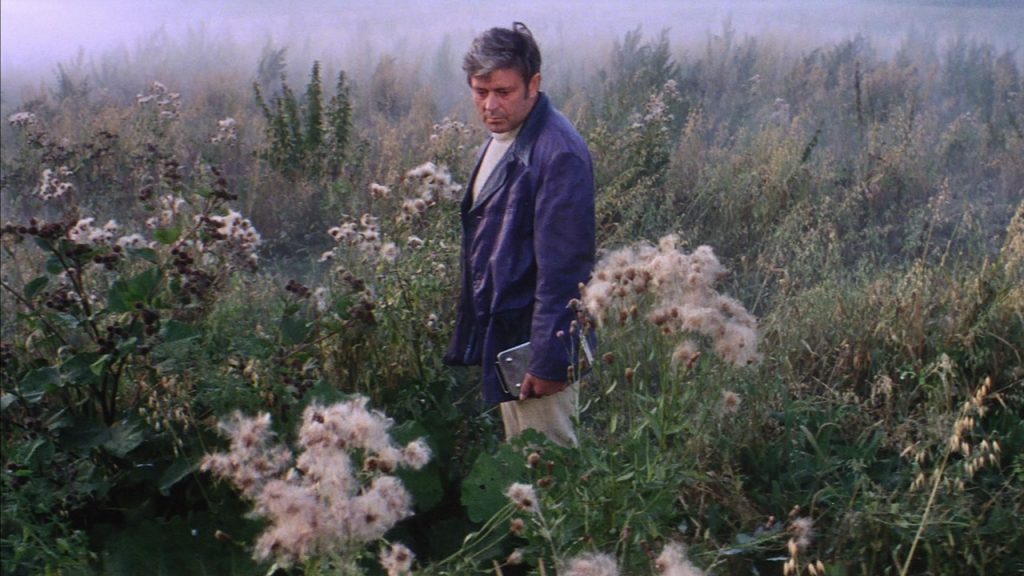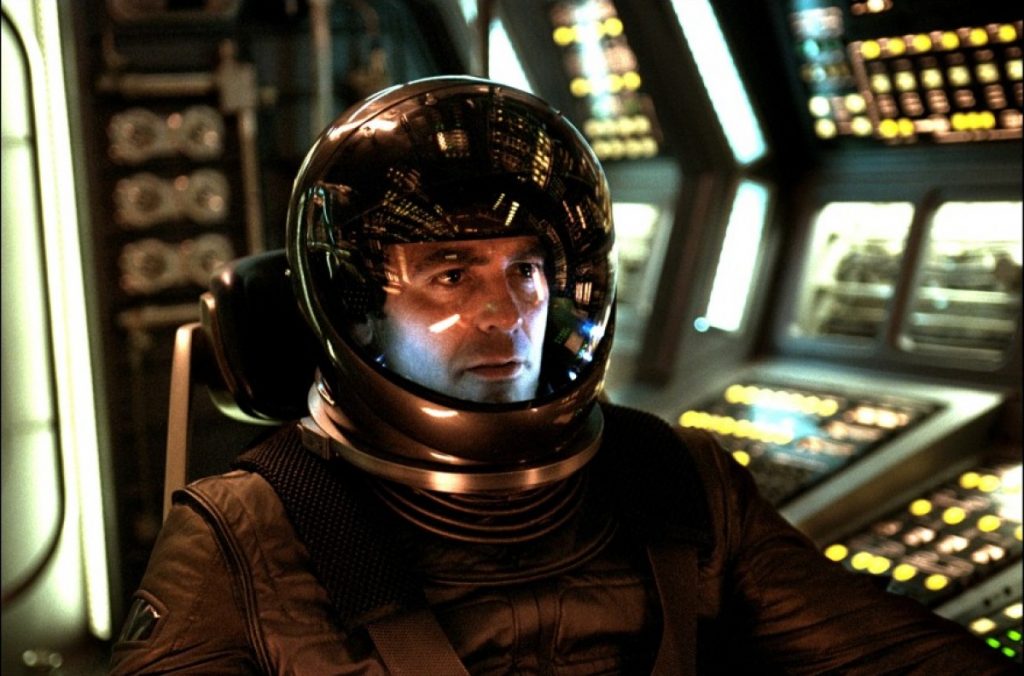Polish author Stanisław Lem’s 1961 novel Solaris is an incredibly literary piece of science fiction, filled with mystic landscapes and unanswerable questions. A modern encapsulation of the sublime situated in the frontier of outer space, Lem’s highly introspective and philosophical work is difficult to capture in film. The two adaptations that have been made, the first by Andrei Tarkovsky in 1972 and the second by Stephen Soderbergh in 2002, both emphasized different aspects of Lem’s grander novelistic aims but failed to satisfy the author. Lem considered the two versions to have missed his original purpose and accused Tarkovsky of remaking Crime and Punishment. In response to Soderbergh’s version, Lem said that his book “was not dedicated to erotic problems of people in outer space.” Lem’s Solaris is far more epistemological, concerning humanity’s search for knowledge in the face of a planet/being that evades ontology itself.
The novel follows psychologist Kris Kelvin, an academic charged with determining whether humankind’s exploration of Solaris—a brainlike oceanic planet—is worth continuing. He flies to the space station above Solaris and, once aboard, meets Snow and Sartorius, the only other scientists on the ship. After his first night on the station, Kris’s old lover Rheya, who killed herself ten years ago after a quarrel with him, appears, biologically indistinguishable from the woman he loved. Kris learns that the other scientists also have “guests” (as they are called) like Rheya, each one a person from their past. The guests are somehow sent or manifested by Solaris itself—potentially an attempt at communication.

The slow-moving chaos that ensues is less about the plot and characters and more about Lem’s points concerning humanity and knowledge. The novel focuses intensely on the history of humankind’s exploration of Solaris, emphasizing the notion that space exploration is not a search for new worlds but a search for the reaffirmation of humanity, looking for likeness rather than anything new. Humanity’s inability to connect with, understand, and conceive of the manifestations of Solaris in anything other than human form is evidence of that absolute failure. Lem establishes everything humanly conceivable about Solaris—academic controversies, various schools of thought, the different eras of Solarist research—and even cites and paraphrases from books written about the subject. These passages are intensely detailed and descriptive, reflecting on God, man’s search through the cosmos, happiness, the meaning of life, and other topics, making it quite easy to (literally) get lost in the clouds.
Tarkovsky’s 1972 version successfully evades this soup of metaphysical ponderance. While focusing less on the planet itself, the visualization of Solaris is true to the novel. The shots of the colourful bubbling and flowing of the ever-changing ocean make it truly feel like an alien world, and the length and slow pace of the film (almost three hours long) are well-suited to the kinds of philosophical questions it poses. More time in the film is dedicated to establishing Kris’s character than in the book, including an introductory scene about Kris’s life on Earth and his relationship with his father. The long, lingering shots of landscapes, paintings, and parts of the decrepit space station aid the contemplative nature of the film, giving both the viewer and Kris time to wonder about the strangeness of Solaris. I particularly like Tarkovsky’s ending, which departs from the novel by depicting Kris’s “return” to Earth. He arrives back at his father’s home, peering in through the window, where it is raining inside. His father, not noticing the rain, walks outside to meet him. Kris falls to his knees, and the two embrace. The camera pans out, and we see that the country estate is actually an island on Solaris, mimicking Kris’s home. He has found home, happiness, and some kind of cosmic forgiveness, but not on Earth.

While I distinctly consider Tarkovsky’s version to be a film, Soderbergh’s adaptation is, in my mind, more of a movie; the 1972 adaptation is revered by film aficionados, probably for its dramatic shots of things that seem unimportant but are, in fact, very important. Rather than emphasizing philosophy and requiring the viewer to parse out the hidden meaning of scenes, Soderbergh’s 2002 Solaris zooms in on the relationship between Kris and Rheya. Though I consider this portrayal less ambitious than Tarkovsky’s, Kris and Rheya’s relationship makes for an engaging focal point, allowing Soderbergh to explore themes of love, loyalty, and connection in roughly an hour and a half.
In this version, Solaris looks less like Lem’s descriptions and more like a giant tangle of neurons in a brain, which suggests Solaris’s mind-like capacities in an overly obvious way that I did not appreciate. The movie also eliminates much of the ocean imagery and description so carefully crafted in Lem’s work. There are nevertheless some engaging plot twists. Dr. Snow is killed before Kris arrives at the space station and has been impersonated by his guest for the entire film, and in a final plot twist, Kris actually sends home the guest version of himself (which is completely new to the film) and stays behind with Rheya in an Earth-looking place, possibly a facsimile made by Solaris. This ending is more confusing than exciting, though, because it was previously established that guests could not leave Solaris without dying, hence Kris’s reluctance to leave Rheya. If so, where is the real Kris? While Tarkovsky’s ending left me pondering Kris’s cosmic destiny, Soderberg’s ending left me wondering what on Earth (or Solaris, I guess) was going on.
One thing that I enjoyed more about Soderberg’s version of Solaris, however, was the greater depth of Rheya’s character, particularly as compared to Lem’s portrayal. Although Rheya is unstable and suicidal in all three versions, she is nevertheless given an emotional depth in Solaris (2002) that Lem and Tarkovsky refuse her. Rheya seems like more of a child in his writing, and many of Kris’s descriptions of her sound condescending. In Tarkovsky’s version, Rheya (or Hari) also looks like a girl; although the age difference between her and Kris is supposedly ten years, it looks more like twenty or thirty. Natalya Bondarchuk of the 1972 version does an excellent job portraying Rheya’s existential anguish, but in the 2002 version, we get a deeper look into Natascha McElhone’s Rheya and her backstory. The connection between Rheya and Kris (played by George Clooney) in this version is also far more apparent than in the 1972 version, where Hari mostly stares sadly at Kris or into the distance in between suicide attempts.
Both adaptations take different centers of Lem’s novel and expand them into (somewhat) complete worlds. While I found the grittiness of Tarkovsky’s Solaris to be more engaging, the long runtime and experimental shots sometimes drew on my patience. Soderbergh’s Solaris, meanwhile, lacked some of Tarkovsky’s philosophical depth while creating more engaging and relatable main characters. Much can be said for both. And for all the declaiming about the book being better than the movie, I can always ask this counter question: does the movie owe it to the book, the author, or its audience to be faithful in any sense of the word? Is art innovation or perfection? Ironically, in Tarkovsky’s Solaris, there is a moment near the beginning of the film when Berton, a former pilot on Solaris, tells Kris’s father that he likes his house, a homey country cabin; Kris’s father says that he built it identically to his father’s because he finds innovation useless. Why change something that’s already good? Perhaps Lem asked Tarkovsky the same thing, and he didn’t care.
